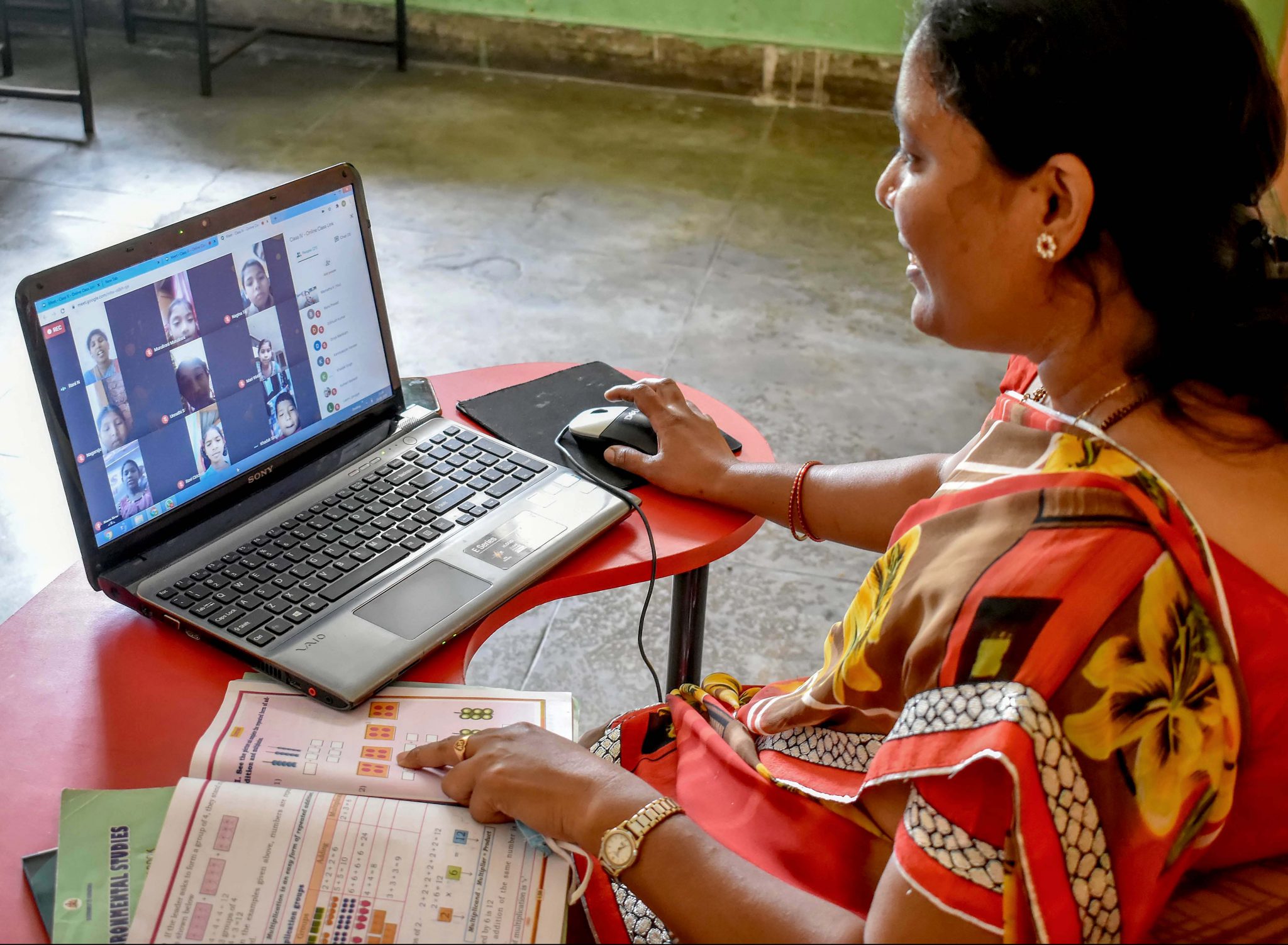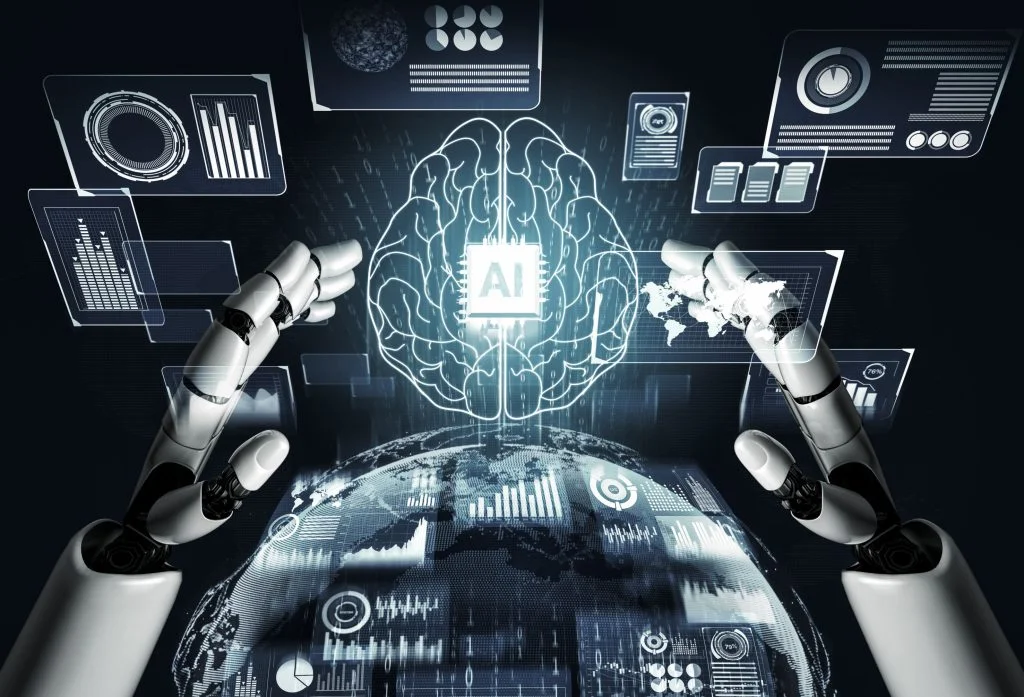- Courses
- GS Full Course 1 Year
- GS Full Course 2 Year
- GS Full Course 3 Year
- GS Full Course Till Selection
- Answer Alpha: Mains 2025 Mentorship
- MEP (Mains Enrichment Programme) Data, Facts
- Essay Target – 150+ Marks
- Online Program
- GS Recorded Course
- Polity
- Geography
- Economy
- Ancient, Medieval and Art & Culture AMAC
- Modern India, Post Independence & World History
- Environment
- Governance
- Science & Technology
- International Relations and Internal Security
- Disaster Management
- Ethics
- NCERT Current Affairs
- Indian Society and Social Issue
- NCERT- Science and Technology
- NCERT - Geography
- NCERT - Ancient History
- NCERT- World History
- NCERT Modern History
- CSAT
- 5 LAYERED ARJUNA Mentorship
- Public Administration Optional
- ABOUT US
- OUR TOPPERS
- TEST SERIES
- FREE STUDY MATERIAL
- VIDEOS
- CONTACT US
Digital Transformation in Women and Child Development
Digital Transformation in Women and Child Development

Why in the News?
- The Ministry of Women and Child Development has mainstreamed digital tools into its core programmes.
- Multiple initiatives have been launched to modernize service delivery, particularly in the areas of nutrition, maternal and child health, safety, and early childhood education
- It emphasizes access to rights, services, protection, and opportunities is being expanded through the use of technology.
- These efforts aim to empower women and children, bridge rural-urban divides, and build stronger community-level infrastructure.
Key Highlights
- Vision and Direction
- Grounded in the broader national goal of building an inclusive and digitally empowered society.
- Aligned with the vision of Viksit Bharat@2047, which aspires to holistic development and equitable growth.
- Emphasizes the integration of technology to ensure that services and benefits are delivered swiftly, transparently, and efficiently to all sections of the population.
- Transformative Initiatives
- Saksham Anganwadi Initiative
- Over 2 lakh Anganwadi centres upgraded.
- Equipped with digital devices, improved infrastructure, and training for Anganwadi workers.
- Services registered on Poshan Tracker, improving service delivery.
- Poshan Tracker
- Digital platform bridging rural-urban service gap.
- Recognised for PM’s Award for Excellence in Public Administration (2025).
- Supports initiatives like Poshan Bhi, Padhai Bhi for early childhood education.
- She-Box Portal
- Single-window complaint mechanism under Sexual Harassment of Women at Workplace Act (2013).
- Enables online redressal and tracking of complaints.
- Facial Recognition in Nutrition Programme
- Aims to reduce leakages by identifying genuine beneficiaries.
- Mission Shakti Dashboard & Mobile App
- Provides integrated support and connects women to one-stop centres.
- Ensures access to safety, justice, and empowerment.
- Pradhan Mantri Matru Vandana Yojana (PMMVY)
- Direct cash transfer scheme supporting pregnant and lactating mothers.
- Over 4 crore beneficiaries.
- Fully digital, Aadhaar-based, paperless system.
- Saksham Anganwadi Initiative
- Tangible Outcomes
- Health Improvements
- Sex Ratio at Birth improved from 918 (2014–15) to 930 (2023–24).
- Maternal Mortality Rate declined to 97 per 1,000 births (2018–20) from 130 (2014–16).
- Child Protection
- Strengthened through CARINGS portal (Central Adoption Resource Information and Guidance System).
- It is an online platform developed to streamline, monitor, and ensure transparency in the adoption process in India.
- Managed by the Central Adoption Resource Authority (CARA), under the Ministry of Women and Child Development.
- CARINGS plays a crucial role in regulating both in-country and inter-country adoptions.
- Ensures Transparent, efficient adoption processes.
- Institutional Reforms
- Monitoring of child care institutions enhanced.
- Partnerships with statutory bodies, NGOs, and child rights organisations expanded.
- Health Improvements
Implications for Economy
- Improved Human Capital Development
- Better nutrition, healthcare, and early education for children contribute to a healthier and more productive future workforce.
- Support for pregnant and lactating women improves maternal health, reducing healthcare costs in the long term.
- Increased Workforce Participation
- Schemes like She-Box and Mission Shakti promote safer work environments for women, encouraging greater female labor force participation.
- Supportive schemes like PMMVY and digital childcare initiatives reduce the burden on women, allowing them to pursue economic opportunities.
- Efficient Welfare Spending
- Use of AI, real-time data, and digital tracking (e.g., Poshan Tracker) reduces leakages and ensures targeted delivery, making public expenditure more efficient.
- Direct Benefit Transfer (DBT) under PMMVY reduces administrative costs and delays.
- Boost to Digital Infrastructure and Innovation
- Expansion of digital governance tools in rural areas drives demand for internet connectivity, mobile devices, and digital literacy.
- It helps in creating economic opportunities in tech and service sectors.
- Empowerment and Inclusive Growth
- Economic empowerment of women leads to greater household savings, investments in children's education, and overall socio-economic upliftment.
- Inclusive development ensures balanced regional growth, especially in underserved and remote areas.
- Formalization of Informal Services
- Digitally enabled Anganwadi systems bring informal care services under a structured framework, increasing accountability and opening paths to upskilling and employment for workers.
Challenges and Way Forward
|
Challenges |
Way Forward |
|
Digital divide |
Expand internet access and digital infrastructure in remote areas. |
|
Lack of proper training for Anganwadi and frontline workers |
Conduct regular digital literacy and upskilling programmes. |
|
Addressing data security and privacy concerns |
Implement strong cybersecurity and data protection protocols. |
|
Ensuring last-mile delivery in tribal/remote regions |
Use mobile units, digital vans, and community volunteers. |
|
Resistance to digital adoption in conservative social settings |
Use awareness campaigns and local influencers to encourage acceptance. |
|
Reducing system-level leakages and inefficiencies |
Leverage Artificial Intelligence (AI)/for real-time monitoring and predictive analytics. |
Conclusion
The Ministry of Women and Child Development is leveraging digital tools like Saksham Anganwadi, PMMVY, Poshan Tracker, and She-Box to improve service delivery and empower communities. While progress is evident, challenges like the digital divide, last-mile access, and data security persist. Continued innovation and inclusive implementation are key to realizing the goals of Viksit Bharat@2047.
|
Ensure IAS Mains Question Q. Discuss the role of digital transformation in strengthening welfare delivery mechanisms in the women and child development sector. Highlight key initiatives and the challenges faced in ensuring inclusive and effective implementation. (250 words) |
|
Ensure IAS Prelims Question Q. Which of the following initiatives are associated with the Ministry of Women and Child Development’s digital governance reforms?
Select the correct answer using the code below
Answer: d Explanation Statement 1 is correct: Poshan Tracker is a digital platform under the Ministry of Women and Child Development that enables real-time monitoring of nutrition services provided at Anganwadi centres. It ensures efficient delivery of services related to maternal and child nutrition. Statement 2 is correct: She-Box Portal (Sexual Harassment Electronic Box) is an initiative of the Ministry of Women and Child Development that provides a single-window access for women to register complaints of sexual harassment at the workplace, and also track their status. Statement 3 is correct: CARINGS Portal (Child Adoption Resource Information and Guidance System) is managed by the Central Adoption Resource Authority (CARA), under the Ministry of Women and Child Development. It digitizes the entire adoption process, making it transparent and efficient. |




